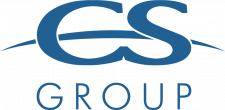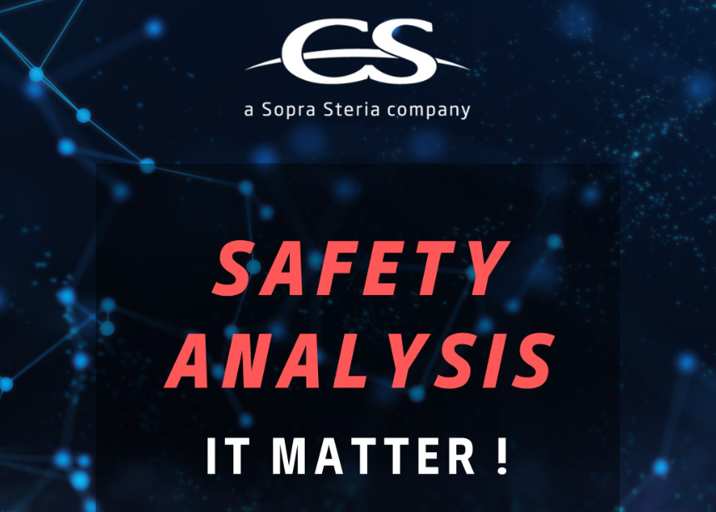Safety analysis represents a pivotal achievement, serving not only as a means to save project time and costs but also as a cornerstone guaranteeing the creation of a safe, reliable, and robust product.
Safety analyses are crucial for various industries, including automotive, ADAS, aeronautics, railways, battery, industrial machinery, AgTech, semiconductors, etc. It is a structured process to prevent failures or combinations of systems leading to severe consequences, providing a rigorous and standardized framework for evaluating safety-related aspects according to the system Safety Integrity Levels (SIL).
CS Group – Canada stands as your partner in safety, specializing in various standards and industries, such as ISO26262 – ARP4761 – IEC61508 – EN50126/ 128/ 129 – ISO13849 – ISO25119, and more.
Level and types of Safety Analysis
Objective of Safety Analysis: the primary goal of safety analysis, is to evaluate the design’s safety and ensure the presence of appropriate safety mechanisms that protect the design from systematic and random faults at each level.
System level: Assess the overall safety of a system, identifying hazards, conducting architecture safety assessment, and defining safety requirements.
· HARA (Hazard Analysis and Risk Assessment), FTA (Fault tree analysis), FMEA (Failure Modes and Effects Analysis)
Hardware level: Focus on the safety/reliability of HW components like electronic systems, sensors, and mechanical parts.
· FTA, FMEDA (Failure Modes, Effects, and Diagnostic Analysis)
Software level: Identify and mitigate potential failures and safety issues related to software components.
· SW FMEA, DFA (Dependant Failure Analysis), FFI (Freedom From Interference)
System Level
System Safety Analysis involves systematically assessing and mitigating safety hazards and risks to ensure safe operation. The benefits include regulatory or OEM requirements compliance, risk reduction, time and cost savings, and quality improvement.
The benefits: Regulatory or OEM requirements compliance, risk reduction, time and cost saving, quality improvement
Generic Methodology:
- Hazard Analysis & Risk Assessment : to Identifies and assesses hazards, assigns risk levels, and establishes safety goals
- Safety Concept : Defines the overall system architecture, safety mechanisms and requirements allocation to components at the system level
- SIL/ DAL Determination : Assigns Safety Integrity Levels (level of risk reduction) to safety functions and components
- FMEA – Bottom Up Analysis : Failure Modes and Effects Analysis systematically assesses potential failure modes and their effects
- FTA – Top Down Analysis: Fault Tree Analysis analyzes how combinations of events or failures can lead to specific system-level hazards
- Common Mode Analysis: Identify and evaluate failures or events that could affect multiple systems simultaneously
Hardware Level
The Hardware Safety Analysis Hardware Safety Analysis is a structured process assessing the safety and reliability of HW components. It’s crucial for OEMs and companies developing Microcontrollers, ECUs, Sensors, Inverters, Converters, ASICs…
The Benefits: regulatory or OEM requirements compliance, time and cost savings, quality improvement.
Tech & IT companies that want to transition HW to heavy industries need to adapt to strict safety standards. Adjusting their development processes is necessary to meet the safety requirements.
Generic Methodology:
- SIL / DAL Determination : Determining the level of Safety Integrity is crucial as it determine frequency and severity of hazards and the performance required to maintain and achieve safety.
- FMEDA : Random hardware faults are assessed quantitatively using FMEDA to prove that the design achieves the targeted SIL/ DAL.
- FTA Analyze how combinations of events, failures, or faults can lead to a specific hazardous or undesired outcome.
Metrics quantitatively assess safety, reliability, and performance. Here are the metrics associated to the different methodologies:
- FMEDA
- SPFM: Single Point Fault Metric
- LFM: Latent Fault Metric
- SFF: Safe failure Fraction
- FTA
- PHFM: Probability Metric of Hardware Failure
- PFH: Probability of a Dangerous Failure per Hour
Software Level
Software Safety Analysis detects failure modes of critical embedded SW components contributing to the system’s safety, especially as software complexity increases in industries like automotive.
It’s a great challenge as software becoming and more and more complexe in the automotive. For instance, Tech & IT companies that want to transition Software to heavy industries need to adapt to strict safety standards. Adjusting their development processes is necessary to meet the safety requirements.
The Benefits : Compliance with regulatory or OEM requirements, time and cost savings, and quality improvement.
Generic Methodology:
SIL / DAL Determination : Determining the level of Safety Integrity is crucial:
Frequency and severity of hazards
Determine the performance required to maintain and achieve safety
SW FMEA: Systematically identify and evaluate potential failure modes within the SW or its components: Scope definition Identification of failure modes Assign severity, occurrence & detection ratings
- DFA (Dependent Failure Analysis): Ensure that the effectiveness of the safety mechanisms is not affected by dependent failures:
- Identify dependencies.
- Evaluate the dependent failure impact.
- Calculate the risk priority.
- Freedom from Interference (FFI) is the main part of the DFA as it ensures that SW components operate independently and mitigates potential interference from other components or external factors : spatial. temporal. communication interference
Where to Begin ?
CS Canada is your privileged partner to accelerate your safety journey. Elevate your project with our proven solutions for unparalleled safety and efficiency.
Over 50 OEMs, Tier 1/ 2 entities have entrusted us with their program certification and product development challenges. Join them and leverage the benefits of our proven templates and methodology, honed over 25 years of expertise in the dynamic field of safety-critical system development.

